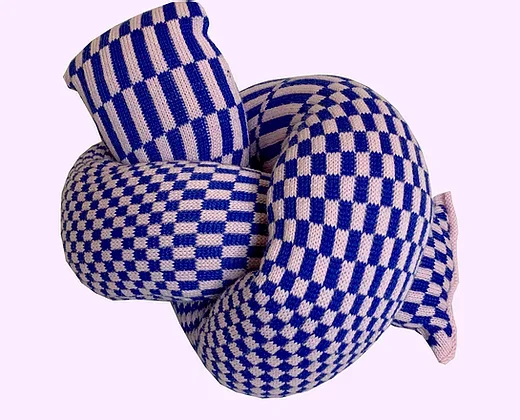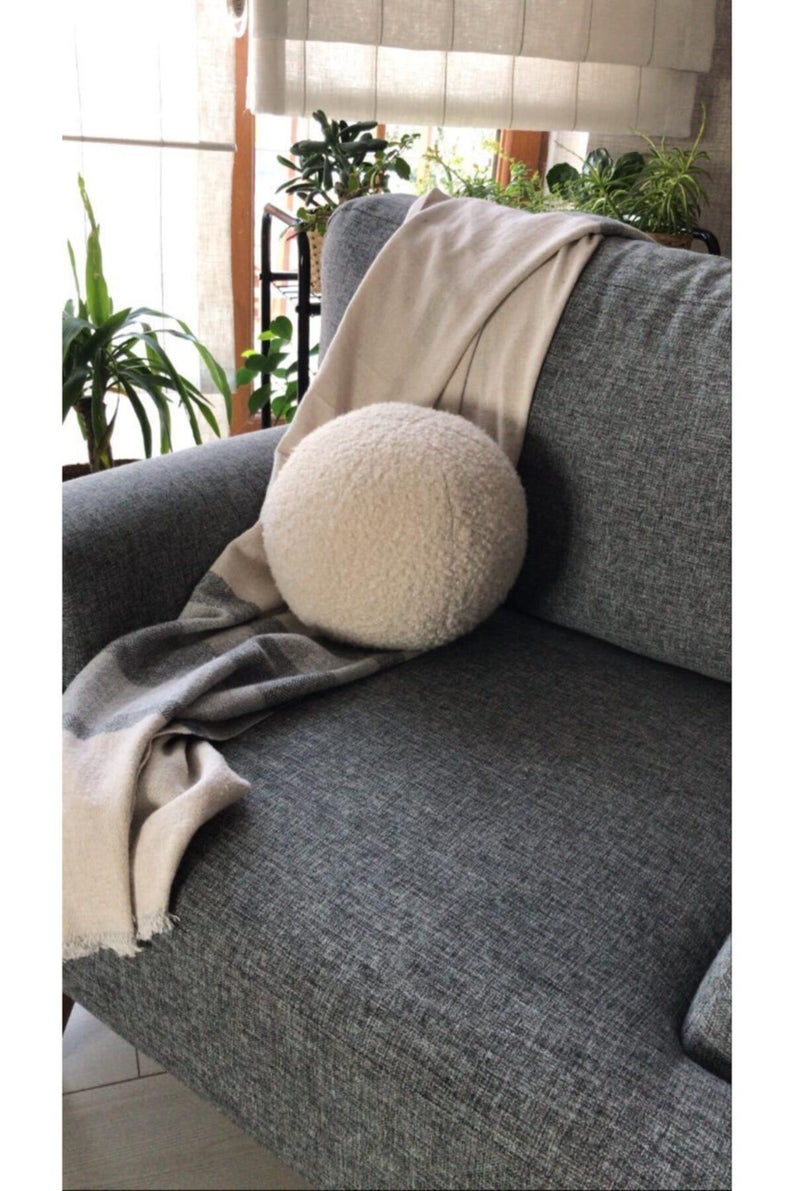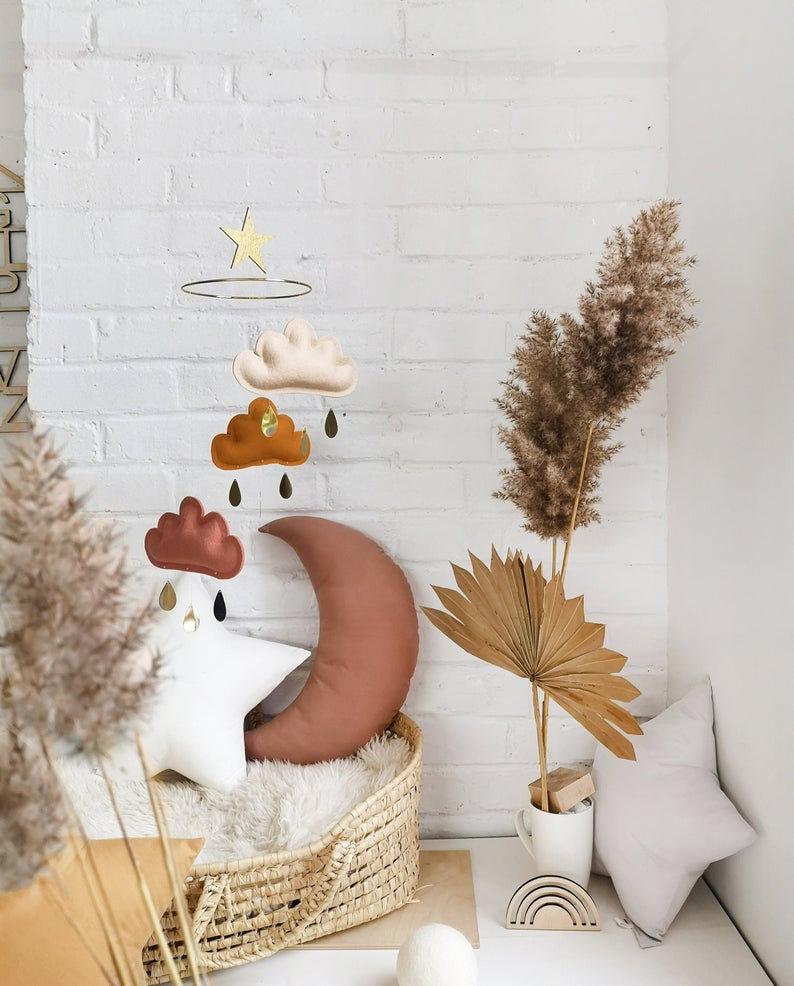Decorative pillows and the trends that fuel them can tell us a lot about the world. No, really. In the show notes for her Decoder Ring podcast episode on the subject, Willa Paskin writes: "The rise of the decorative pillow is due to a host of forces, including designers, manufacturers, retailers, and television. On home décor shows, the pillow is a symbol of luxury, comfort, decadence, coziness, and self-care—but to others it’s just another example of consumerist excess."
This, however, is a pre-pandemic assessment. And as with literally everything in the last year or so, how we see decorative pillows – and what we want from them – has shifted. Soft furnishings in general have enjoyed a rise (and rise) in popularity but this is not down to a search for comfort alone: curating a home’s aesthetic has become as important as finding pieces which are comfortable and comforting. After all, everyone who isn’t an essential worker has been confined to their home. How we feel in our home space, and the way it looks on social media and in the background of Zoom calls, has become more important than ever.
AdvertisementADVERTISEMENT
Consequently, throw pillows and cushions are less of a symbol of luxury or decadence. They have become another vehicle through which to communicate your taste, your aesthetic and your eye for something unique, all while providing some cosy, squishy comfort.
The result is that independent creatives, as well as some independent brands, have thrived over the past year by creating more sculptural soft furnishings. Unlike the accent cushions of recent years which have focused on bold patterns or textures, these pandemic-era pillows are twisted or crafted into unconventional shapes which make far more of a statement than your standard square. The new throw pillow feels like a cushion but looks nothing like it, taking the form of a squiggle, globe, cube, knot or even a freeform snake. And its popularity is booming, particularly on Instagram where more and more people are looking to support small and independent creators over big-name brands.
Lily Parker, creator of @zebraknits on IG, has rapidly grown a following for her machine-knit, patterned knots. Coming in an array of colours, patterns and sizes, interest in her wares has skyrocketed over 2020 and into this year.
It all started in September of last year when she began experimenting with the deliberately wonky shape. "I used to work for a commercial interior company and I felt like my ideas weren't being understood so I started to experiment with ideas outside of work. I found myself making lots of knots for friends and before I knew it they started to become more popular." At first monochrome, the knots evolved into a range of patterns and prints to suit every mood.
AdvertisementADVERTISEMENT
Pushing beyond the expectations of a more commercial design runs through independent brands, too. Design House Stockholm bills itself as a publisher of Scandinavian design rather than a more traditional producer, working with designers the way publishers do with writers. The design for its own knot cushion has been produced since 2016 and has sold more than 80,000 units according to the UK's brand representative, Michelle Alger. But it has seen a real growth in popularity in the last year – driven, in part, by the introduction of the larger seat cushion version.
Then there are those creators whose artistic vision led them into the world of interiors almost by accident. Beccy Nipps is a Manchester-based artist who has been making soft sculptures for years as part of her art degree. These sculptures, she tells R29, "were based around themes of domesticity but were not intended to be functional items". In January she began making cushions inspired by her practice. "I was mainly selling to friends and then more people began taking an interest."
All the makers of these less than conventional shapes have seen major success as they straddle the line between decoration, collector's item and plush toy. They often have an element of collectability to them. "We have also noticed that the people who have bought one very often come back to buy other colours out of the range," says Michelle of the knot cushion. "Today we have a colour palette with 12 different colours to choose between."
AdvertisementADVERTISEMENT
This points to the playfulness at the heart of the trend. A sculptural cushion could sit happily within a Scandinavian aesthetic of clean lines and warm shades; it could suit minimalists with its beige tones, subtle bouclé textures and simple shapes; or it could play into the kitsch aesthetic of pastels, patterns and organic shapes. But with its unconventional form and nod to the soft, plushy shapes of childhood, in all cases it makes home decor that bit more playful and joyful, whether or not the cushion can actually be used as, well, a cushion.
As Beccy tells R29: "I think that my cushions are somewhere between a decorative cushion and a soft toy. They provide comfort in their tactility and the composition. Perhaps there's also something comforting about things that are reminiscent of childhood."
That isn't to say that the cushions aren't comfortable, though. They're hardly ergonomic designs intended to improve your WFH back pain; instead they straddle the line between purely decorative and more conventional soft furnishings. Zebra Knits can even be untied and manipulated into different shapes depending on your preference.
Anyway, comfort isn’t the primary point. As opposed to the more explicit excess of having three million throw pillows on your bed, there is far more careful curation happening here, alongside a desire to support more indie brands or creators. The point is not to rest your head on something artistic. The point is that your artistic statement can be comfortable too, if you want it to.
AdvertisementADVERTISEMENT









